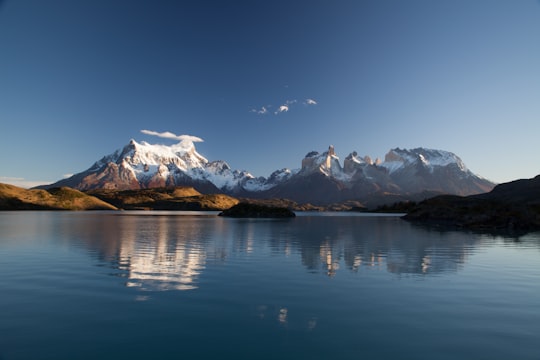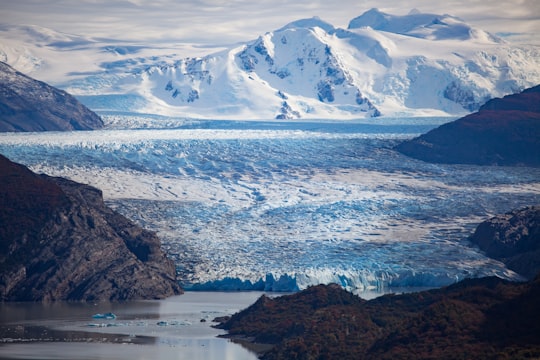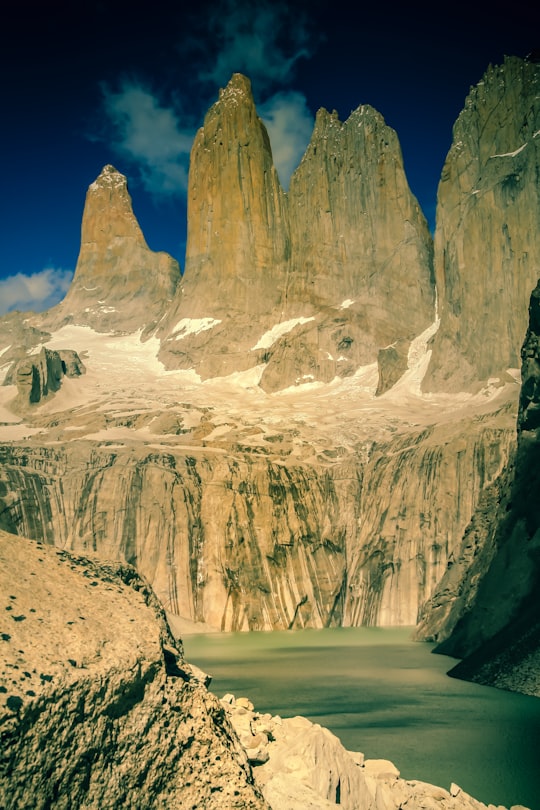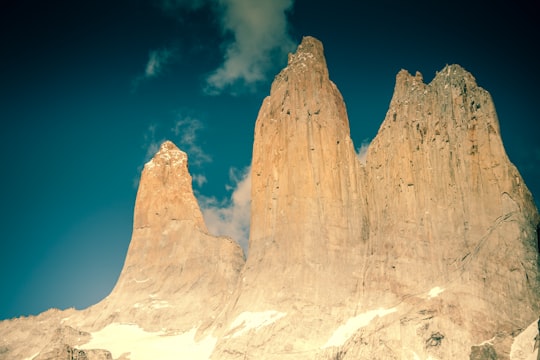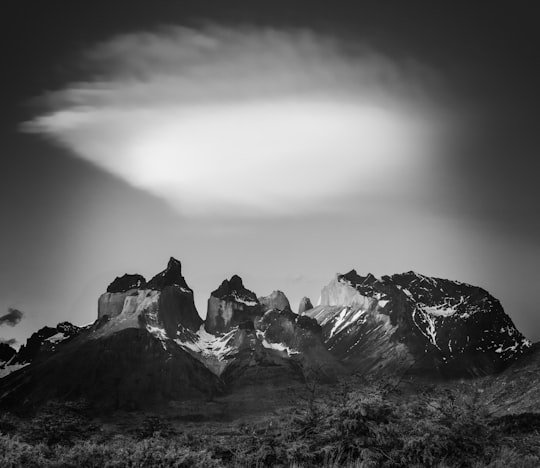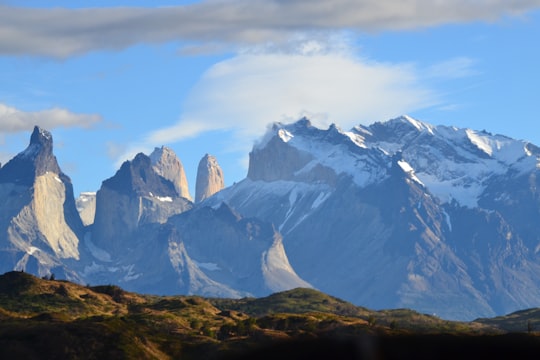Travel Guide of Torres del Paine in Chile by Influencers and Travelers
Torres del Paine is a Chilean commune located in the inland of Última Esperanza Province and Magallanes Region. The commune is administered by the municipality in Cerro Castillo, the major settlement in the commune.
The Best Things to Do and Visit in Torres del Paine
TRAVELERS TOP 2 :
1 - Torres Del Paine
Torres del Paine National Park is a national park encompassing mountains, glaciers, lakes, and rivers in southern Chilean Patagonia. The Cordillera del Paine is the centerpiece of the park. It lies in a transition area between the Magellanic subpolar forests and the Patagonian Steppes. The park is located 112 km north of Puerto Natales and 312 km north of Punta Arenas.
Learn more Book this experience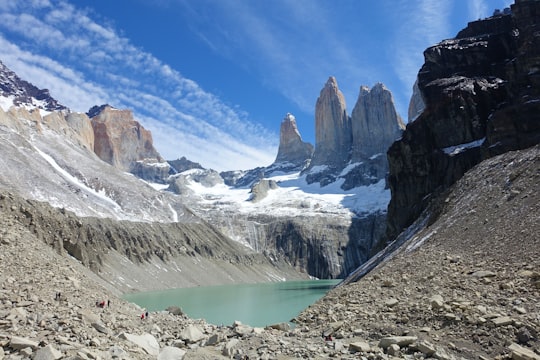
2 - Del Toro Lake
28 km away
Del Toro Lake is a lake located in the Magallanes Region, southern Chile. Also known as Lago del Toro or Lago Toro, its etymology comes from the lake's ability to generate 4 m swells due to a long fetch and high winds aligned with the long axis of the lake.
Learn more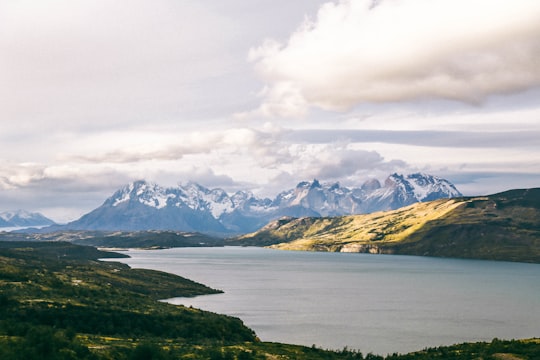
Disover the best Instagram Spots around Torres del Paine here
Book Tours and Activities in Torres del Paine
Discover the best tours and activities around Torres del Paine, Chile and book your travel experience today with our booking partners
Pictures and Stories of Torres del Paine from Influencers
20 pictures of Torres del Paine from Kurt Cotoaga, Jim Castanzo, Thomas Fields and other travelers
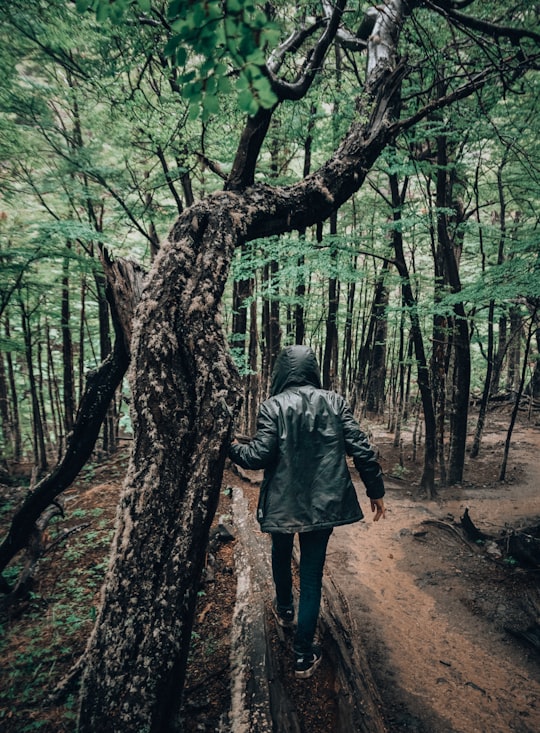
- A forest at the foot of the Torres del Paine, Patagonia is an immensely magical place. ...click to read more
- Experienced by @Elias Arias | ©Unsplash

- with a Guanaco face to face, what an incredible creation of mother earth, Patagonia ...click to read more
- Experienced by @Elias Arias | ©Unsplash
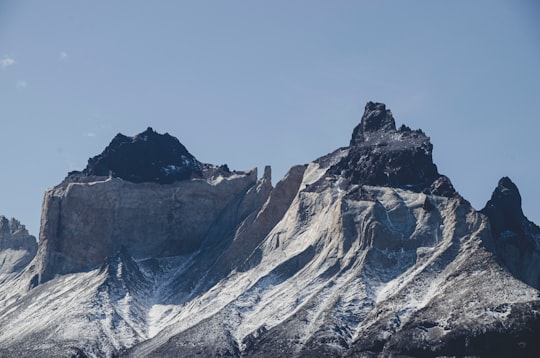
- Los Cuernos / National Park Torres del Paine / Patagonia ...click to read more
- Experienced by @ELISA KERSCHBAUMER | ©Unsplash
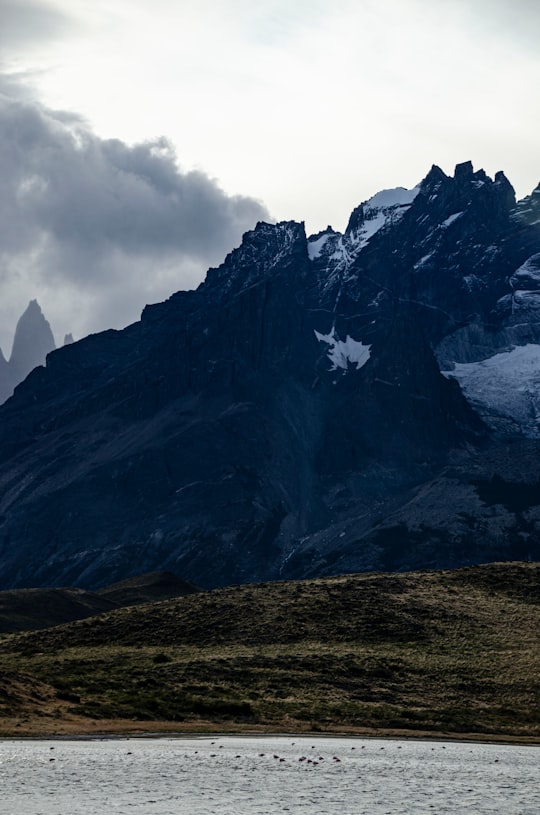
- Flamingos at National Park Torres del Paine / Patagonia ...click to read more
- Experienced by @ELISA KERSCHBAUMER | ©Unsplash
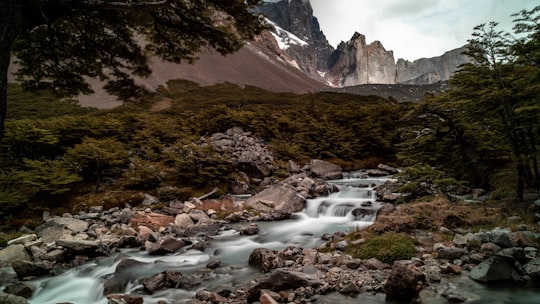
- Glacier river in French Valley, Torres Del Paine ...click to read more
- Experienced by @Tilo Mitra | ©Unsplash
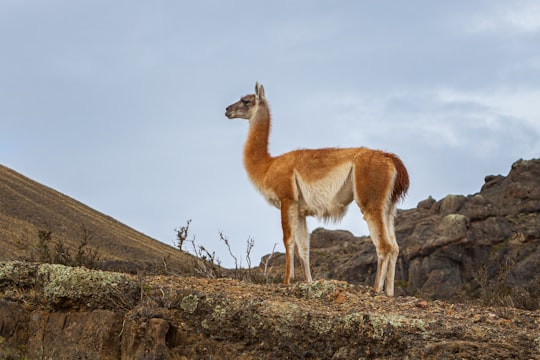
- Guanaco standing on a hill against overcast sky ...click to read more
- Experienced by @Chris Stenger | ©Unsplash
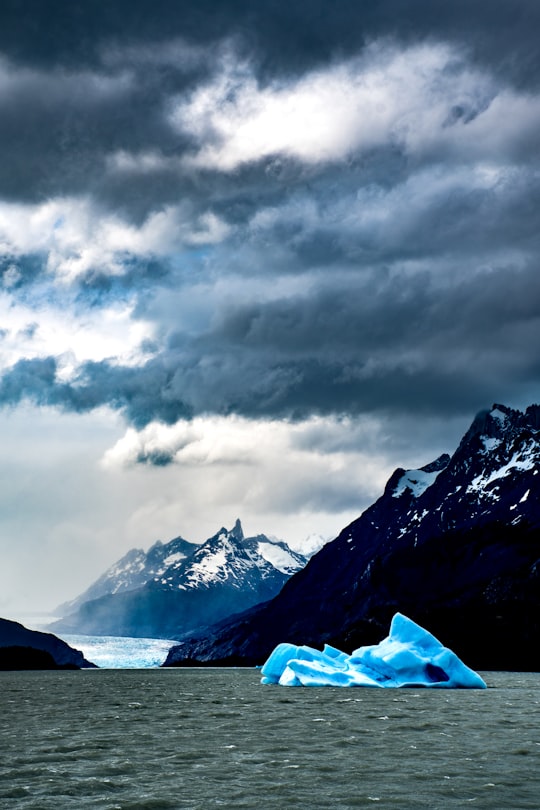
- Icebergs and glacier in Grey Lake, Patagonia ...click to read more
- Experienced by @Sam Power | ©Unsplash
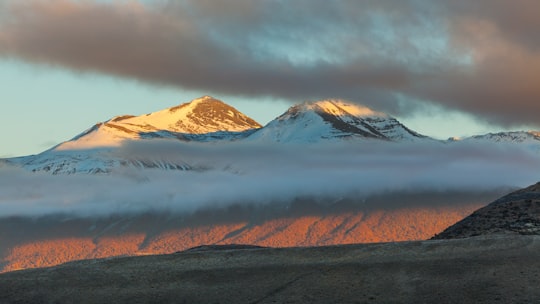
- Mountains with rising clouds at sunrise ...click to read more
- Experienced by @Chris Stenger | ©Unsplash
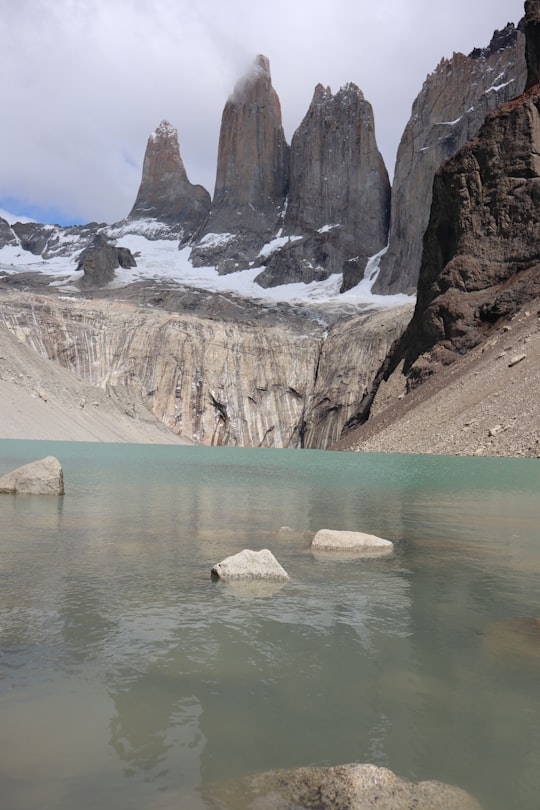
- Torres del Paine mountains in Chile ...click to read more
- Experienced by @Miranda Salzgeber | ©Unsplash
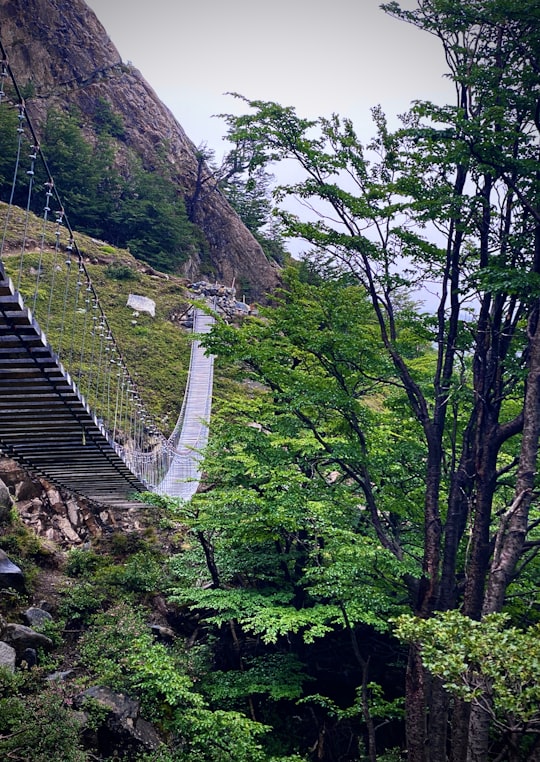
- Hanging bridges en route to Grey ...click to read more
- Experienced by @Akshay Nanavati | ©Unsplash
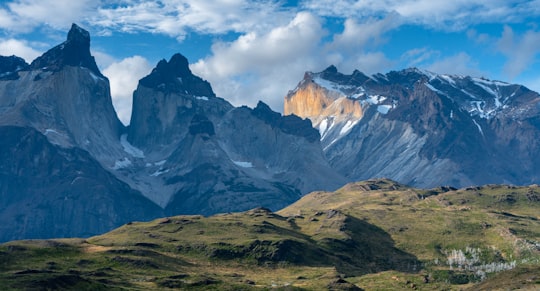
- Los Cuernos in Torres Del Paine ...click to read more
- Experienced by @Tilo Mitra | ©Unsplash
Plan your trip in Torres del Paine with AI 🤖 🗺
Roadtrips.ai is a AI powered trip planner that you can use to generate a customized trip itinerary for any destination in Chile in just one clickJust write your activities preferences, budget and number of days travelling and our artificial intelligence will do the rest for you
👉 Use the AI Trip Planner
Why should you visit Torres del Paine ?
Travel to Torres del Paine if you like:
⛰️ Mountain range ⛰️ Highland ❄️ Glacial lake ❄️ Glacial landform 🌲 Forest ❄️ GlacierHow to visit Torres del Paine ?
Getting to Torres del Paine National Park can be an adventure in itself. The nearest airport is Presidente Carlos Ibañez del Campo International Airport in Punta Arenas. From there, you can take a bus to Puerto Natales, which takes about 3 hours. Once in Puerto Natales, you'll need to catch another bus to the park, a trip that takes approximately 2 hours.
It's essential to book your accommodations and guided tours in advance, as the park is in high demand during the peak season (November to March). If you plan to hike the famous W Circuit or O Circuit, make sure to reserve your campsites or refugios ahead of time, as space is limited. Additionally, park entrance fees must be paid upon arrival.
The costs associated with visiting Torres del Paine National Park can vary greatly depending on your choice of accommodations, transportation, and activities. Park entrance fees are around $35 USD for international visitors. Accommodation costs range from $15 USD for basic campsites to $150 USD or more per night for upscale lodges.
The best things to do in Torres del Paine National Park include hiking the W or O Circuit, which offer stunning views of the park's iconic granite towers, glaciers, and turquoise lakes. Wildlife enthusiasts can spot guanacos, Andean condors, and even the elusive puma. For a more relaxed experience, embark on a boat tour to the Grey Glacier or visit the Salto Grande waterfall.
For dining options in the park, most refugios provide meals for guests, but it's always a good idea to bring your own snacks and supplies. In Puerto Natales, try El Bote for delicious seafood dishes or El Cazador for local Patagonian cuisine.
Accommodation options in Torres del Paine National Park range from basic campsites to luxury lodges. EcoCamp Patagonia offers sustainable dome accommodations with breathtaking views of the mountains, while Hotel Lago Grey provides comfortable rooms and easy access to the Grey Glacier. For budget travelers, Camping Paine Grande is an affordable option with basic facilities.
Off the beaten path:
For a unique and less crowded experience, consider visiting the lesser-known French Valley. This picturesque valley is home to hanging glaciers, waterfalls, and striking granite peaks. To reach the French Valley, you'll need to take a catamaran from Pudeto to Paine Grande, followed by a challenging hike up the valley. The views and tranquility are well worth the effort, offering a memorable experience away from the park's main trails.
Learn More about Torres del Paine
Organization of a trek in the Torres del Paine Park
Divided between Chile and Argentina, Patagonia is one of the least populated regions of the world.
Its southern climate and its breathtaking landscapes make it a mythical place where nature is preserved, especially thanks to the numerous national parks.
Among these parks, is the famous Torres del Paine, located in the region of Magallanes and the Chilean Antarctic.
This park is classified as a biosphere reserve by UNESCO and is often considered the eighth wonder of the world.
On the program: discovery of lakes, glaciers, valleys, mountains, ending with the famous Granite Torres, which gave their name to the park.
The choice of the trek
If you want to discover Patagonia and especially the Torres del Paine Park, it is important to prepare yourself beforehand, starting with the choice of your trek.
It is possible to make someday hikes, to realize the W or the O trek to discover the park.
The most famous circuit is the W, which allows seeing the emblematic places of the park. It is generally done in four or five days.
The O is longer, between 8 and 10 days are necessary to realize the loop.
To arrive at Puerto Natales and then to Torres del Paine
Before going to the national park, you must first go to the nearest city, Puerto Natales.
After three hours of bus, we arrive in a small city, mostly composed of small houses, many hostels, and food and trekking stores.
It will be possible to take the bus for Torres del Paine only the next day, at 7:30 am. It is very easy to meet people in this city since it is the rallying point for all the trekkers.
Many buses leave every day for Torres del Paine.
The journey which lasts between two and three hours gives a foretaste: the landscapes are sumptuous, one would believe oneself in a film!
The first stop is at the entrance of the park to pay for the entrance ticket.
Count about thirty euros if you are not resident in Chile, no matter if you stay just for the day or several days.
The reservations of lodgings are also checked. Then you take the bus or a shuttle to go to the starting point that you have chosen. The adventure can begin!
The must-sees of the Trek W
- The lake Pehoé
You can't start (or finish) the W trek without admiring the Pehoe lake and its turquoise waters.
The crossing of half an hour on Lake Pehoé is worth it: the color of the water is magnificent and the view on the Cuernos del Paine is breathtaking. We enjoy this magic moment before the effort. Once arrived at Paine Grande, we can begin the trek.
- The Grey Glacier
The Grey Glacier is a must-see in Torres del Paine. To reach it, about 11 kilometers of walking are necessary. This first hike allows us to realize the power of the wind in Patagonia.
The Grey Glacier is part of the South Patagonian Ice Field. After Antarctica and Greenland, it is the third-largest ice cap in the world. The second day of trekking was rather quiet, I just went back to Paine Grande.
- The Francés Valley
The third day of the W trek allows us to discover the Francés Valley and in particular the Francés Glacier and the Mirador Britanico.
In total, about 9 hours of walking are necessary to complete the 22 kilometers.
Here again, the whole day was rich in landscapes: view on the Skottsberg lake and the Cuernos del Paine, crossing a suspension bridge and the forest to reach the Italiano campsite.
We advise you to put your backpack at the campsite, they are watched over and there is no risk. Then you have to climb through the forest and the rocks to reach the Mirador Francés.
- The viewpoint Base las Torres
To finish the W trek in beauty, it is necessary to go to the viewpoint of the Torres. This place is extremely frequented by day hikers and can quickly become a "tourist highway" during the day. To avoid this situation, I advise you to sleep at the Chileno refuge in the evening and to leave in the night to discover the Torres.
Frequently Asked Questions by Travelers planning a trip to Torres del Paine
For clothing, pack two of each item (hiking boots, wool socks to prevent blisters, windproof pants, technical T-shirts, gloves, hats) so that you always have a dry outfit available in case of rain. Also remember to bring a waterproof jacket, a merino wool fleece, and sunscreen whatever the season.
The climbs and descents are steep, so some people may want to bring trekking poles.
If you plan to camp, don't forget your tent, mattress, sleeping bag, and cooking equipment.
If you have chosen the option of eating in a refuge, remember to bring some snacks such as cereal bars, dried fruit, and cookies.
You can fill your water bottle in the rivers of the Torres del Paine Park. Their water is fresh and drinkable!
Before entering the park, you can sleep in Puerto Natales, the city of access to Torres del Paine and the starting point for boat trips to the Patagonian fjords.
Once in the park, you will have three possibilities for overnight stays: shelters, paid campsites, and free campsites.
Huts: Including breakfast and dinner, the average price is 140 euros per night. It is recommended to book in advance because, despite the price, the sites are often full.
The Torres del Paine Park has seven refuges.
The paying campsites: This is the compromise option because these sites are located near the refuges.
The main advantage is that you will have access to the sanitary facilities and showers of the refuges. You can rent tents and sleeping bags. The price is around 10 to 60 euros per night. Be aware that the nights are particularly cool in the park, which can calm the ardor of the less adventurous.
Free camping: This is the most extreme option. You have to carry all your equipment and only have access to dry toilets.
The small port city of Puerto Natales is a good stop before the night before the beginning of the trek.
Its large choice of hotels and restaurants, as well as its numerous buses (about 3 per day in high season) leading to the park, make it an ideal stopover.
If you plan to camp during the trek, I advise you to buy your provisions at the town's supermarket.
The prices there are much lower than those charged by the mini-markets present at the entrance and in Torres del Paine.
90 km separate Puerto Natales from the main entrance of Paine Park.
The entrance fee to Torres del Paine is about 27 euros for an adult and 8 euros for a child.
You can easily reach Chilean Patagonia from El Calafate in Argentina.
The bus ride to Puerto Natales takes about 6 hours, including the border crossing.
Behind the windows, it's a no man's land that passes between steppes and mountains, asphalt and track...
The most touristic season in Torres del Paine Park is between January and February.
It is summer in Chile, which guarantees good weather, perfect if you want to camp.
However, the crowds peak during this period, which means crowded trails and campsites...
Choose the off-seasons, especially the fall. The month of March is ideal.
Temperatures do not exceed 20° C. On the other hand, the strong gusts of wind and the changing weather cause variations of 10° to 15° C.
Where to Stay in Torres del Paine
More Travel spots to explore around Torres del Paine
Click on the pictures to learn more about the places and to get directions
Discover more travel spots to explore around Torres del Paine
⛰️ Mountain range spots ⛰️ Hill spots ⛰️ Highland spots ❄️ Glacial landform spots ️🏜️ Badlands spots ❄️ Glacier spots 🌲 Nature reserve spots 🐾 Wildlife spots ⛰️ Hill station spots ❄️ Glacial lake spots ❄️ Tundra spots 🌲 Forest spots 🌲 Ecoregion spots 🏞️ Stream spots ⛰️ Summit spots 🌉 Bridge spots 🏞️ Loch spots ⛰️ Mountain spots Mountain pass spotsTravel map of Torres del Paine
Explore popular touristic places around Torres del Paine
